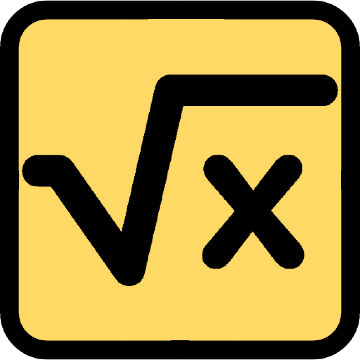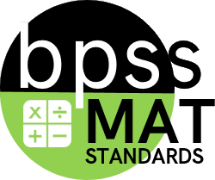MAT-07.AR.EE.01

|
7th Grade (MAT) Targeted Standard
(AR) Algebraic Reasoning
(EE) Expressions and Equations
Learners will look for, generate, and make sense of patterns, relationships, and algebraic symbols to represent mathematical models while adapting approaches in novel situations.
|
MAT-07.AR.EE.01 Apply properties of operations as strategies to add, subtract, factor, and expand linear expressions involving variables, integers, and/or nonnegative fractions and decimals with an emphasis on writing equivalent expressions.*
 Proficiency Scale Proficiency Scale
Progressions
Properties of Operations
- MAT-02.AR.OA.02 Apply the properties of operations to solve addition and subtraction equations and justify thinking.
- MAT-03.AR.OA.02 Apply the properties of operations to solve multiplication and division equations and justify thinking.
- MAT-04.AR.OA.02 Identify and apply the properties of operations for addition, subtraction, multiplication, and division and justify thinking.
- MAT-05.AR.OA.02 Analyze problems using the order of operations to solve and evaluate expressions while justifying thinking.
- MAT-06.AR.EE.03 Identify when two expressions are equivalent. Apply the properties of operations to generate equivalent expressions.
- MAT-07.AR.EE.01 Apply properties of operations as strategies to add, subtract, factor, and expand linear expressions involving variables, integers, and/or nonnegative fractions and decimals with an emphasis on writing equivalent expressions.
- MAT-08.AR.EE.05 Solve linear equations with rational number coefficients and variables on both sides, including equations that require using the distributive property and/or combining and collecting like terms. Interpret the number of solutions. Give examples of linear equations in one variable with one solution, infinitely showing solutions or no solutions.
- MAT-09.AR.05 Justify each step in solving a linear equation that may or may not have a solution.
Linear Equations
- MAT-07.AR.EE.01 Apply properties of operations as strategies to add, subtract, factor, and expand linear expressions involving variables, integers, and/or nonnegative fractions and decimals with an emphasis on writing equivalent expressions.
- MAT-08.AR.EE.03 Explain the characteristics of a linear relationship, including identifying the slope and yintercept in tables, graphs, equations, and descriptions.
- MAT-08.AR.EE.04 Represent linear relationships using tables, graphs, equations, and descriptions when given a relationship in one of these forms.
- MAT-08.AR.EE.05 Solve linear equations with rational number coefficients and variables on both sides, including equations that require using the distributive property and/or combining and collecting like terms. Interpret the number of solutions. Give examples of linear equations in one variable with one solution, many solutions, or no solutions.
- MAT-09.AR.03 Create equations and inequalities in one variable and use them to solve problems. Include equations arising from linear, quadratic, and exponential functions.
- MAT-09.AR.04 Create linear and exponential equations in two or more variables to represent relationships between quantities. Graph equations on coordinate axes with appropriate labels and scales.
- MAT-09.AR.05 Justify each step in solving a linear equation that may or may not have a solution.
- MAT-09.AR.06 Solve linear equations and inequalities (to include compound inequalities) in one variable.
- MAT-09.AR.07 Solve a system of linear equations graphically and algebraically. Create and solve a system of linear equations in context and interpret the results.
- MAT-12.AR.05 Add, subtract, multiply, and divide rational expressions. Understand that rational expressions form a system analogous to rational numbers, closed under addition, subtraction, multiplication, and division by a nonzero rational expression.
- MAT-12.AR.07 Create equations and inequalities and use them to solve problems. Include equations arising from linear and quadratic functions and simple rational and exponential functions.
- MAT-12.AR.08 Create equations in two or more variables to represent relationships between quantities.
- Graph equations on coordinate axes with appropriate labels and scales.
- MAT-12.AR.09 Represent constraints by equations or inequalities and by systems of equations and/or inequalities and interpret solutions as viable or non-viable options in a modeling context.
- MAT-12.AR.12 Solve simple rational and radical equations in one variable and identify extraneous solutions.
- MAT-12.AR.F.14 Write arithmetic and geometric sequences both recursively and with an explicit formula and convert between the two forms. Use sequences to model situations.
- MAT-12.AR.15 Apply the Factor and Remainder Theorems to determine efficiently whether a liner expression is a factor of a polynomial expression.
- MAT-12.AR.16 Using graphs, technology, tables, or successive approximations, show that the solution(s) to the equation f(x) = g(x) is the x-value(s) that result in the y-values of f(x) and g(x) being the same.
- MAT-12.AR.17 Solve a simple system consisting of a linear equation and a quadratic equation in two variables algebraically and graphically.
- MAT-12.AR.18 Find the inverse of a matrix if it exists and use it to solve systems of linear equations (using technology for matrices of dimension 3 × 3 or greater).
- MAT-12.NO.13 Apply the Fundamental Theorem of Algebra to find all roots of a polynomial equation and determine the nature (i.e., integer, rational, irrational, real, complex) of the roots.
- MAT-12.AR.19 Solve a system of equations in three or more variables with matrices (using technology).
- MAT-12.AR.F.23 Use inverse functions to solve trigonometric equations that arise in modeling contexts; evaluate the solutions and interpret them in context.
Equivalent Expressions
- MAT-06.AR.EE.03 Identify when two expressions are equivalent. Apply the properties of operations to generate equivalent expressions.
- MAT-07.AR.EE.01 Apply properties of operations as strategies to add, subtract, factor, and expand linear expressions involving variables, integers, and/or nonnegative fractions and decimals with an emphasis on writing equivalent expressions.
- MAT-08.AR.EE.01 Explain the relationship between repeated multiplication and the properties of integer exponents. Apply a single exponent property to generate equivalent numeric and algebraic expressions that include numerical coefficients.
- MAT-09.NO.02 Perform basic operations on simple radical expressions to write a simplified equivalent expression.
- MAT-09.AR.01 Use the structure of an expression (i.e., quadratic and exponential) to identify ways to rewrite it.
- MAT-09.AR.02 Rearrange formulas to isolate a quantity or variable(s) of interest using the same reasoning as in solving equations.
- MAT-09.AR.07 Rearrange multi-variable formulas to highlight a quantity of interest.
- MAT-09.AR.F.06 Write a function defined by an expression in different but equivalent forms to reveal and explain the different properties of the function.
- MAT-12.NO.02 Perform operations on complex radical expressions to write a simplified equivalent expression.
- MAT-12.AR.01 Rearrange multi-variable formulas to highlight a quantity of interest.
- MAT-12.AR.02 Use the structure of an expression (to extend to polynomial and rational expressions) to identify ways to rewrite it.
- MAT-12.AR.04 Choose and produce an equivalent form of an expression to reveal and explain properties of the quantity represented by the expression.
- MAT-12.AR.05 Add, subtract, multiply, and divide rational expressions. Understand that rational expressions form a system analogous to rational numbers, closed under addition, subtraction, multiplication, and division by a nonzero rational expression.
- MAT-12.AR.F.03 Write a function defined by an expression in different but equivalent forms to reveal and explain the different properties of the function.
- MAT-12.GM.01 Write the equation of a conic section given its special features. Convert between the standard form and general form equations of conic sections.
- MAT-12.GM.02 Identify key features of a conic section given its equation. Apply properties of conic sections in context.
- MAT-12.NO.12 Extend polynomial identities to the complex numbers.
|


